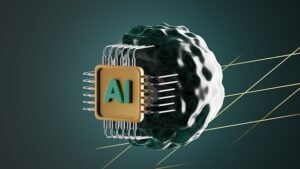Artificial Intelligence (AI) is a vast field encompassing various techniques, methodologies, and applications aimed at enabling machines to mimic human-like intelligence and perform tasks that typically require human cognition.
Here’s a deeper dive into some key aspects of AI:
Types of Artificial Intelligence:
Narrow AI : Narrow AI designed to perform a specific task or a narrow range of tasks. Examples like virtual assistants, recommendation systems, and image recognition algorithms.
General AI (Strong AI): General AI refers to machines with human-like cognitive abilities across a wide range of tasks. These systems would possess the ability to understand, learn, and apply knowledge in diverse contexts, akin to human intelligence.
Machine Learning
Supervised Learning: Algorithms are trained on labeled data, with input-output pairs provided during training. The model learns to map inputs to outputs, enabling it to make predictions or decisions when new data is encountered.
Unsupervised Learning: Algorithms learn patterns and structures from unlabeled data without explicit supervision. This approach is useful for tasks such as clustering, dimensionality reduction, and anomaly detection.
Deep Learning:
Deep learning is a subset of machine learning that utilizes artificial neural networks with multiple layers (deep architectures) to learn representations of data. These networks can automatically discover intricate patterns and features from raw data, enabling them to excel in tasks such as image recognition, speech recognition, and natural language processing.
Natural Language Processing (NLP):
NLP is the interaction between computers and humans through natural language. It encompasses tasks such as language understanding, language generation, sentiment analysis, and machine translation. NLP techniques enable machines to comprehend, interpret, and generate human language, facilitating applications like chatbots, virtual assistants, and language translation services.
Computer Vision:
Computer vision enables machines to interpret and understand the visual world. It involves tasks such as object detection, image classification, facial recognition, and scene understanding. Computer vision algorithms process and analyze images and videos to extract meaningful information, enabling applications in autonomous vehicles, surveillance systems, medical imaging, and augmented reality.
Ethical and Societal Implications:
The advancement of AI raises various ethical, societal, and policy-related considerations. These include concerns about privacy, bias, job displacement, algorithmic fairness, autonomy, and accountability. Responsible AI development involves addressing these challenges through ethical guidelines, regulations, and frameworks to ensure that AI technologies are deployed safely, ethically, and inclusively.
AI continues to evolve rapidly, driving innovation across industries and transforming the way we live and work. Its potential to revolutionize healthcare, finance, transportation, education, and many other sectors is immense. However, realizing the full benefits of AI while mitigating risks requires interdisciplinary collaboration, ethical considerations, and ongoing research and development efforts.


